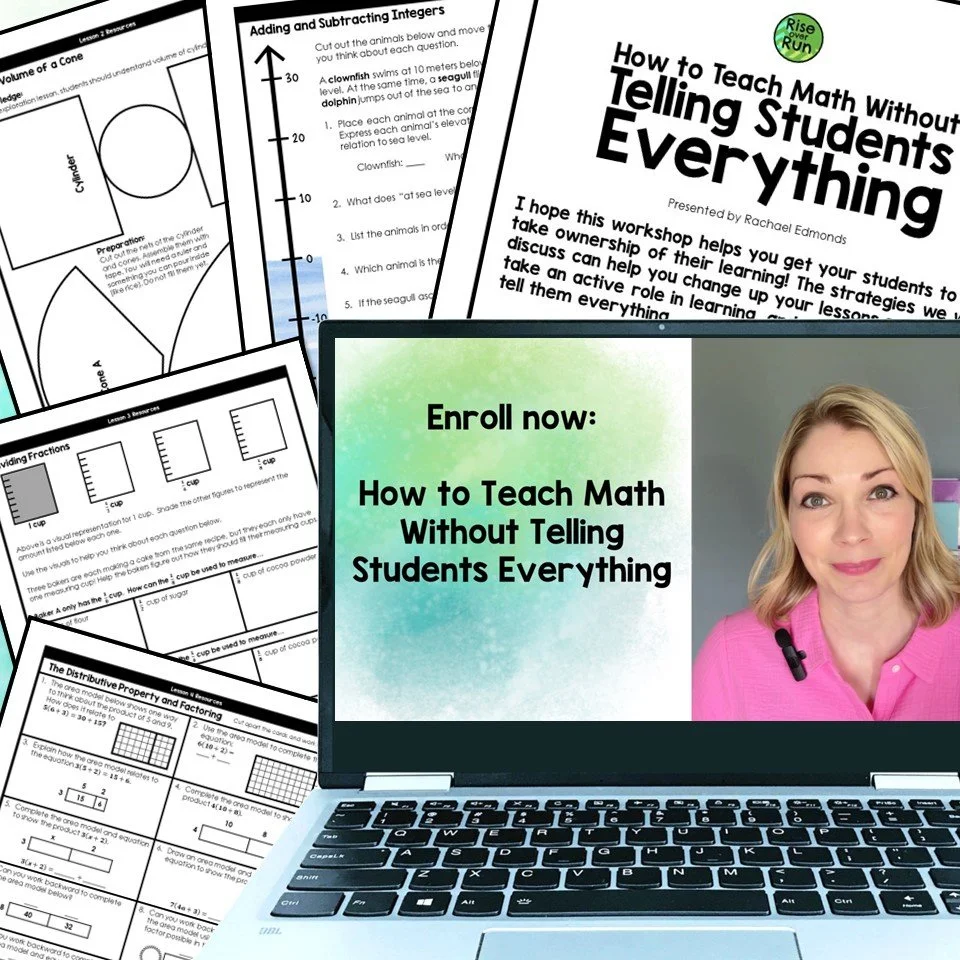Why We Shouldn't Use Gradual Release Often in Math Class
I do, we do, you do… not learn math this way.
Gradual release is a method of teaching where the teacher starts out by showing how to do a procedure. (I do.) Then, the class works on a problem together. (We do.) And then finally students do a problem themselves. (You do.) The teacher is gradually releasing the responsibility to the students, the responsibility of getting an answer.
The idea of gradual release may be successful with some topics and some subjects, but it wasn’t originally intended for math. It goes against a lot of the things we know about teaching math and how students learn meaningful math. If we look at the Standards for Mathematical Practice, gradual release is not conducive for most of them.
It does not teach perseverance when problem-solving.
When we show students how to solve a problem, they aren’t actually problem-solving. They’re just following a procedure. Problem-solving involves struggle and perseverance. Good problems allow different solution methods. Why would students try different methods if they’ve been shown a method that works?
Gradual release eliminates the need for students to defend their reasoning.
Gradual release does not teach students how to construct arguments or defend their reasoning. Have you ever asked students how they got an answer, and they responded, “By following the steps,” or “like you did”? These responses are signs that the student did not use much (or any) mathematical reasoning. How can we have rich mathematical discussions in class if everyone uses the same procedure that the teacher has shown them?
Gradual release does not usually leave room for student choice.
We can and should allow students to make meaningful choices. The Standards for Mathematical Practice emphasize that the student makes decisions. The students should be choosing tools strategically, choosing how to approach a problem, choosing what method makes sense to them. We want students using tools, such as calculators, manipulatives, rulers, models, visuals, etc. We want them to know how to use these tools, but most importantly we need them to choose them at the right times. If they are accustomed to copying the teacher’s method, they are likely to just choose the tool we chose.
It does not allow time for students to make their own observations.
We want students to notice patterns and formulate their own ideas about how math works. We even want them to find their own shortcuts. When a student discovers a shortcut, they are making sense of the math, looking for patterns, and becoming more efficient. This is different than when a teacher models a shortcut before a student has had time to understand the logic behind it.
Gradual release does not require much thought (by the students).
We want students to construct their own math knowledge as they work through difficult tasks, making mistakes, figuring out different methods, defending their ideas, and growing in confidence. If we want students thinking, let’s stop doing the thinking for them. We want students to get the message that math is about figuring things out. It’s not just about following rules and steps. Gradual release blurs this message.
Anytime we hear a strategy to try in our classroom, it is good idea to see if it aligns with the ideas in the Standards for Mathematical Practice. Read them here.
To learn more about strategies for teaching math without telling students everything, check out my workshop.
In the workshop, you’ll learn practical ways to change up your math lessons to get students exploring, thinking, and taking ownership of their learning.
I hope you found this post helpful in planning your math lessons. I’d love to hear your thoughts in the comments.


